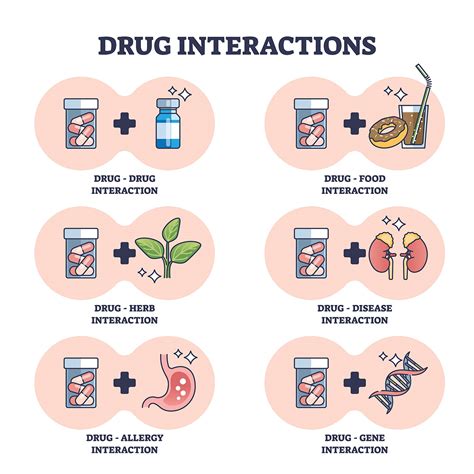Intro
Discover Valtrex side effects, including common and rare symptoms, interactions, and long-term risks, to ensure safe treatment of herpes, cold sores, and genital herpes with this antiviral medication.
The importance of understanding Valtrex side effects cannot be overstated, especially for individuals who are prescribed this medication to manage herpes simplex virus (HSV) infections, including genital herpes, cold sores, and shingles. Valtrex, also known by its generic name valacyclovir, is an antiviral drug that has been widely used to treat these conditions. However, like all medications, it comes with potential side effects that can range from mild to severe. Recognizing these side effects is crucial for patients to manage their condition effectively and minimize any adverse reactions.
The use of Valtrex has become common due to its effectiveness in reducing the severity and frequency of herpes outbreaks. It works by inhibiting the replication of the virus, thereby reducing the symptoms and helping the body to recover more quickly. Despite its benefits, it's essential for patients to be aware of the possible side effects to ensure they can seek medical help if they experience any unusual symptoms. This knowledge also empowers patients to make informed decisions about their treatment plan, potentially discussing alternative medications or adjusting their dosage if side effects become unbearable.
Understanding the side effects of Valtrex is also vital for healthcare providers, as it allows them to monitor patients more effectively and adjust treatment plans as needed. By being aware of the common and less common side effects, healthcare professionals can provide better care and support to their patients, ultimately leading to more successful treatment outcomes. Furthermore, ongoing research into the side effects of antiviral medications like Valtrex contributes to the development of safer and more effective treatments for viral infections, benefiting public health as a whole.
Introduction to Valtrex

How Valtrex Works
The mechanism of action of Valtrex involves the selective inhibition of viral DNA synthesis. Once valacyclovir is converted into acyclovir, it is phosphorylated by viral thymidine kinase, an enzyme produced by the herpes virus. This phosphorylation converts acyclovir into its active form, acyclovir triphosphate, which then competes with the viral DNA building blocks (deoxyguanosine triphosphate) for incorporation into the growing viral DNA chain. When acyclovir triphosphate is incorporated, it acts as a chain terminator, effectively stopping the replication of the viral DNA. This action reduces the viral load, thereby alleviating the symptoms of the infection and helping the body's immune system to control the outbreak.Common Side Effects of Valtrex

Less Common but Serious Side Effects
In addition to the common side effects, there are less common but potentially serious side effects that require immediate medical attention. These include: - Severe allergic reactions (anaphylaxis) - Stevens-Johnson syndrome - Toxic epidermal necrolysis - Renal impairment or acute renal failure - Neurological problems such as confusion, agitation, or seizures - Blood disorders including anemia, leukopenia, or thrombocytopeniaManaging Side Effects

Special Considerations
Certain populations, such as the elderly, individuals with kidney disease, and those with compromised immune systems, may require special consideration when taking Valtrex. For example, dose adjustments may be necessary for patients with renal impairment to prevent the accumulation of the drug and its metabolites, which could exacerbate side effects. Similarly, immunocompromised patients may require higher doses or more frequent administration of Valtrex to effectively manage their condition, which could also increase the risk of side effects.Interactions with Other Medications

Precautions and Warnings
Valtrex is not approved for everyone, and there are certain precautions and warnings that patients should be aware of. For example, Valtrex is not recommended for patients with a known hypersensitivity to valacyclovir, acyclovir, or any component of the formulation. Additionally, patients should be cautious when driving or operating machinery if they experience dizziness or other central nervous system effects while taking Valtrex.Conclusion and Future Directions

Final Thoughts
As patients navigate the complexities of managing herpes infections with Valtrex, it's essential to maintain a proactive and informed approach. This includes staying up-to-date with the latest information on Valtrex and its side effects, adhering to the prescribed treatment regimen, and communicating openly with healthcare providers. By doing so, individuals can take a significant step towards controlling their condition and improving their quality of life.What is the most common side effect of Valtrex?
+Nausea is one of the most commonly reported side effects of Valtrex, though it is usually mild and temporary.
Can Valtrex be used during pregnancy?
+Valtrex can be used during pregnancy, but only under the supervision of a healthcare provider, as it is classified as a Category B medication, meaning animal studies have failed to demonstrate a risk to the fetus and there are no adequate and well-controlled studies in pregnant women.
How long does it take for Valtrex to start working?
+Valtrex typically starts to reduce the severity of symptoms within 2-3 days of starting treatment, but it may take up to a week for the full effects to be noticed.
We invite readers to share their experiences or ask questions about Valtrex and its side effects in the comments below. Your input can help others better understand this medication and its implications for managing herpes infections. Additionally, consider sharing this article with anyone who might benefit from this information, as awareness and education are key to promoting better health outcomes.
